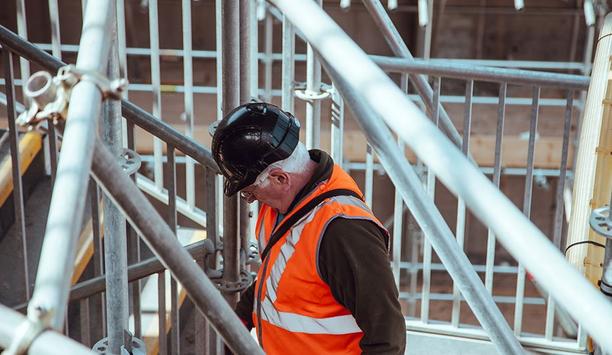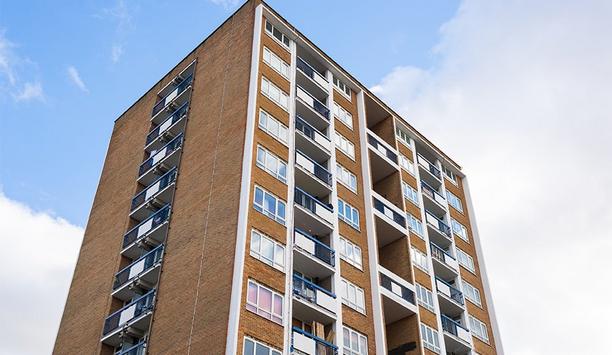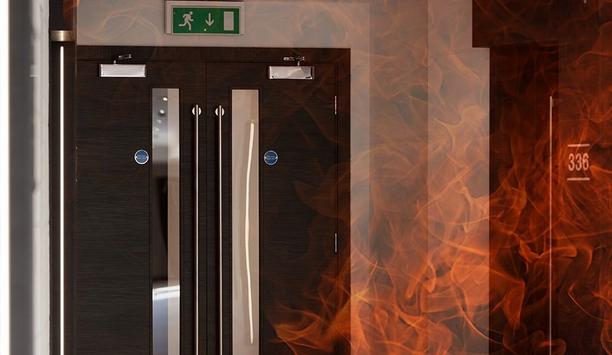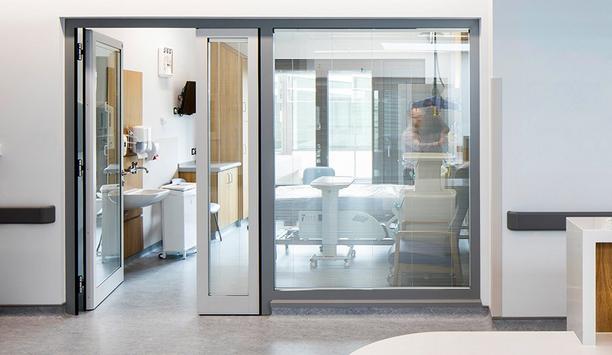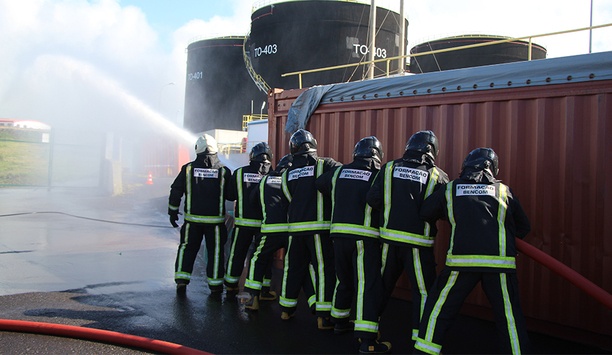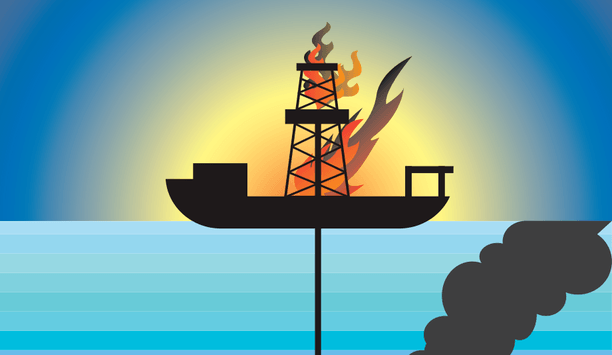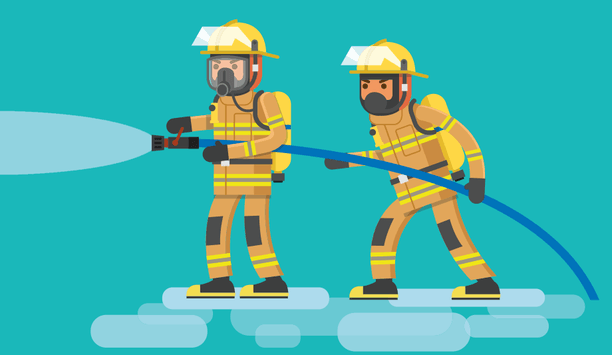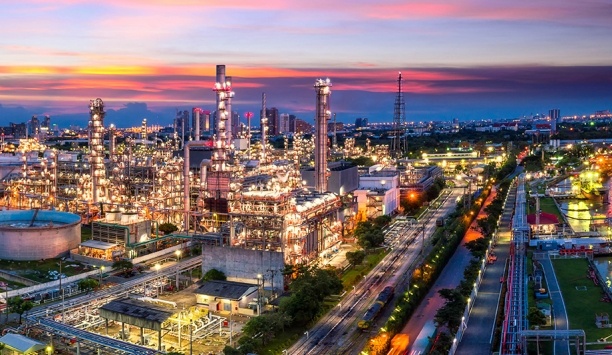Fire Safety Management - Expert Commentary
The Grenfell tragedy has shocked the public and rocked the construction industry. The ongoing inquiry into the 2017 tower block fire has exposed huge flaws in existing practices across architecture, material specification, and building projects. It is also reinforcing the critical importance of fire protection. It took Grenfell, and admittedly the many years that have followed, for the industry to fully reappraise the product selection and testing regimes needed to ensure resident safety in bui...
As Grenfell remains a chilling reminder of the importance of fire safety in construction, new digital methods are now being adopted to guarantee the safety of end users. But how is digitization helping and how will this further advance fire safety during the wider construction process? There’s no doubt that the past five years have had a profound effect on the construction industry. Events such as the 2017 Grenfell Tower fire disaster have forced the industry to sit-up and rethink the pro...
Since the Grenfell tower tragedy in 2017, residential high-rise fire safety has become a top priority for tower block building managers. If a high-rise building is found to contain combustible cladding, then the standard ‘stay put’ policy is no longer considered safe, and instead a temporary ‘simultaneous evacuation’ strategy must be put in place until the cladding issue is resolved. Currently a Waking Watch protocol is the preferred option for ensuring resident’s...
With Grenfell inquiries continuing to uncover a number of fire safety issues, it’s clear that decision makers must learn from critical mistakes in a bid for better fire safety standards. Karen Trigg of Allegion UK highlights the key lessons that must be taken from Grenfell to help ensure a disaster of this magnitude never happens again. On the 14th June 2017, UK witnessed a tragedy. A myriad of critical issues, whether the result of mistakes, oversights or neglect, led to the largest fire...
From a 48-storey fire in the UAE, to a 200-firefighter-strong blaze at student accommodation in the UK, several high-profile, high-rise fires continue to keep the focus of utilities, regulators, developers, and public associations everywhere on actively seeking ways to reduce the risk of fire with innovative materials. Statistics show that the majority of fire related fatalities occur in a domestic setting between the hours of 10 pm and 6 am. Protecting high-rise residential buildings from fire...
Due to the nature of their design and uses, tunnels have particularly unique fire risks, and any fire can spread quickly, risking damage to assets or injuries to teams. Mining, cable and communication tunnels are subject to significantly high risks, as they utilize heavy-duty machinery, flammable materials and cables, which are all subject to the production of excess heat. Here we discuss the prevalent fire risks in tunnels and explain how businesses operating within them can assess and mitigat...
Combining fire alarm and voice evacuation on a single, IP-based platform accelerates emergency response and unlocks a wide range of efficiency gains. This evolution continues with a new generation of fire alarm panels. One of the main tasks for every building and safety manager consists of preparing optimally for emergency scenarios. This includes having the right protocols in place for fires to make sure that a building can be evacuated as quickly as possible when every second counts. For an...
In the years since the Grenfell Tower tragedy of 2017, all eyes have been on fire regulations, which have come under increased scrutiny – and it’s easy to see why. Even after the disaster, businesses across the UK are still lagging behind on mandatory fire safety regulations. It seems that regulatory change has not brought about the desired outcome at most organizations. With all 53 recommendations of the Hackitt Review set to come into effect this year, many a...
As fire safety continues to make the headlines, Karen Trigg of Allegion UK outlines the importance of hardware selection and reminds decision makers of how routine checks can save lives. Door hardware plays a role in the operational integrity of a building, and more crucially, is a key element of a facility’s fire safety and security. Putting fire safety measures at risk Fire doors, and their accompanying hardware in particular, require special attention from facility managers and insta...
The majority of fires within the UK take place within the home; with that in mind, it is highly advisable to regularly update and practice exit strategies in the event of an emergency. In order to raise awareness of fire safety in our communities, it’s important to be clear on what the most common causes of household fires are. Electrical appliances Electrical items are a major culprit of home fires. This can easily be avoided by ensuring a PAT test is carried out each year. It’s...
Last year saw a 14 per cent increase in fires in England, according to UK Home Office statistics. And while around three million fire doors are installed in the UK every year, a lack of understanding during operation, maintenance and management of fire doors is still apparent. In this article, David Hindle, Head of Door Closer Sales at ASSA ABLOY Opening Solutions UK & Ireland, will address this issue. Importance of fire doors Fire doors are often the first line of defense in a fire, yet e...
During these challenging times, it is more important than ever to protect the supply chain of food, including supermarkets and convenience stores in cities around the world. On average 3,740 fires occur in food and groceries stores in the US annually, including supermarkets and convenience stores, according to a report published by the NFPA (National Fire Protection Association). Structure fires in mercantile properties were responsible for the loss of 12 lives and more than $600 million indir...
The long-awaited announcement by the government to ensure sprinkler systems are mandatory in all new high-rise blocks over 11 meters tall has been welcomed by all. However, what happens next - and how quickly - is crucial for all concerned. The UK government recently announced an amendment to the statutory guidance to building safety regulations, known as Approved Document B, reducing the requirement for sprinkler systems from the current 30 meters to 11 meters in high-rise buildings. New laws...
With many businesses and facilities re-opening sites following the Coronavirus lockdown, fire safety may not seem high on the list to other worries and responsibilities. But here, Mandy Bowden, Fire Business Development Manager at Comelit Group UK, led by fire industry bodies, demonstrates why it must be a priority, ensuring installation of systems is guided by best practice in accordance with the development, and fire safety measures are maintained and regularly tested to ensure compliance. Fi...
As we continue to settle into our new norm brought on by COVID-19, it’s become hard to imagine what the world will look like on the other side. If ever there were a clearer definition of a paradigm shift in the making, it’s this time. Yet, it’s not the only paradigm that has shifted in the last few years. As the climate has continued to change, helping to create more fuel for wildfires, we’re experiencing compounding changes at a global scale. And, the light at the...
The fire industry has made it absolutely clear, led by authorized bodies including the BAFE Fire Safety Register, that the current pandemic does not remove the need to comply with any fire safety requirements under the Building Regulations. As we now look beyond the lockdown period, John Allam, Operations Director at Amthal Fire and Security reviews the raft of new proposals demonstrating the Government and industry’s commitment to compliant fire safety and new immediate demands placed on...
New government legislation due to come into force in the United Kingdom on July 1st will require electrical installations in privately rented properties to be tested and inspected at least once every 5 years. The Electrical Safety Standards in the Private Rented Sector Regulations (2020) will require landlords to enlist qualified electricians to complete inspections and provide certification to tenants – or face fines of up to £30,000. While the risk of fire can never be entire...
Through this pandemic, many technologies have leapt into our day-to-day lives of lockdown and working from home, becoming an absolute necessity, as opposed to an alternative reserved for the young and tech-savvy. Whether it’s conference call platforms, social media, multimedia mediums or internet shopping, we are now relying on these technologies for everything. They are keeping businesses moving, they’re putting food on our tables and they are helping us keep in touch with our love...
Over the last decade, fire protection has been transformed by the rise of addressable, IP-based devices embedded in networked fire alarm system infrastructure. The scalability and modular architecture of digital fire alarm systems has unlocked a new level of fire safety, for instance by pinpointing the exact location of a triggered smoke detector in an alarm, or by interfacing with public address systems for phased building evacuations. For system integrators, installation and maintenance of ala...
Across the world, fire and rescue services vary greatly, and each will have their own unique circumstances and challenges to deal with. Firefighters in the USA and Australia are more likely to face wildland fires, whilst in the Middle East, firefighters deal more regularly with transport related fires involving hazardous materials. In many European countries, less than 10% of call-outs are fire related at all, with firefighters much more likely to attend traffic accidents, medical emergencies o...
Did you know an estimated 30% of smoke alarms in the UK are inoperable due to missing, flat or disconnected batteries? For a property to comply with The Regulatory Reform (Fire Safety) Order 2005, it is vitally important that all fire safety equipment is kept in perfect working order at all times. This involves checking that the fire safety equipment is accessible, well maintained and hasn’t been tampered with. There are many ways you can take care of your fire safety equipment, to ensur...
The original fire suppression agent has always been, of course, water. In the age of sail, it was ideal. Not so with the advent of the combustion engine, however. When applied to burning petroleum, the fire spreads. It also simply destroys electronics. Carbon dioxide (CO2) and Halon derivatives were the first widely used commercial fire suppression solutions, gaining popularity in the 1950s and '60s. Unlike water, they were highly effective, electrically non-conductive and didn't leave any resi...
Firefighting is hot, hazardous, and let's face it, grueling work. But believe it or not, the job today has become even more challenging as firefighters must deal with increased heat loads, toxic substances and other physical challenges that make structural firefighting one of the most demanding professions on the planet. So, needless to say, being well-trained, physically fit, and safely equipped can make all the difference in the world. Evolving Technology The fact is, as heat loads and toxic...
Maintaining adequate staffing is a key challenge facing many volunteer fire departments. While not a new issue, increasing population and call volumes along with the expanded services many volunteer departments now provide have made recruiting and retaining volunteers a top priority in the fire service. The federal government supports volunteer recruitment and retention through the Staffing for Adequate Fire and Emergency Response (SAFER) grant program, administered by the Federal Emergency Man...
The era of “smart buildings” is here, bringing new opportunities for significant gains in efficiency, safety and environmental protection. In an interview, Rodger Reiswig, director of industry relations at Johnson Controls Global Fire Protection Products, offers his insights into the impact of smart buildings on fire detection and what it means for organisations planning new facilities. Q: How do you define smart buildings? The term “smart buildings” means different thi...
Within traditional commercial and industrial firefighting systems, engineers have primarily focused on permanent installation designs rather than entertaining alternative or supplemental mobile firefighting systems. Permanent installation design is typically better understood, supported, and supplied throughout the fire protection engineering and manufacturing community. However, mobile firefighting systems provide unique solutions and advantages compared to their permanent installation cousins...
A number of shocking incidents involving fire have highlighted the need to better manage risks in buildings. David Adkins, managing director at Risk Warden, explains why some organisations need to give compliance with statutory regulations more focus and how the use of state-of-the-art online risk assessment tools can help to ensure that a building is as safe as possible. The Grenfell Tower disaster in London, in which 72 people lost their lives, brought the subject of fire safety into sharp fo...
The fire and security industry as we all understand it today is due for a much-needed paradigm shift. The solutions that security dealers and integrators are installing and deploying today have advanced considerably and for many, those systems do an excellent job safeguarding the homes and small businesses of their customers. However, all of those installed solutions have one inherent flaw: traditional fire alarms and security systems are only reactive in nature. By reactive, we mean that altho...
Workplace mobility is on the rise, which means organizations have an increasing number of employees who travel or work from home. In fact, there were 96.2 million mobile workers in 2015 and IDC predicts that mobile workers will account for nearly three quarters (72.3 percent) of the total U.S. workforce by 2020. While the growth of mobile workers is a boon to productivity both inside and outside the workplace, it also creates unique communication challenges – especially in em...
It can be taken as proven that the trends in urbanization, the mobility of the population and the demographics, have had and will continue to have tremendous impact on our daily lives. These impacts were and are supported by disruptive technology changes (such as the evolution of the internet and mobile communication) and result in higher dependencies of almost all economic and social processes. Compared with former generations, we are spending most of our time in buildings or closed mobile con...
The New Future For Fire Agencies
DownloadThe Eight Key Trends in Fire Detection in 2023
DownloadA Digital Platform to Improve Fire Safety Compliance and Inspections
DownloadOvercoming the Challenges of Fire Safety in the Paper Industry
DownloadCarbon Monoxide: Creeping Killer Caught In The Act
Download